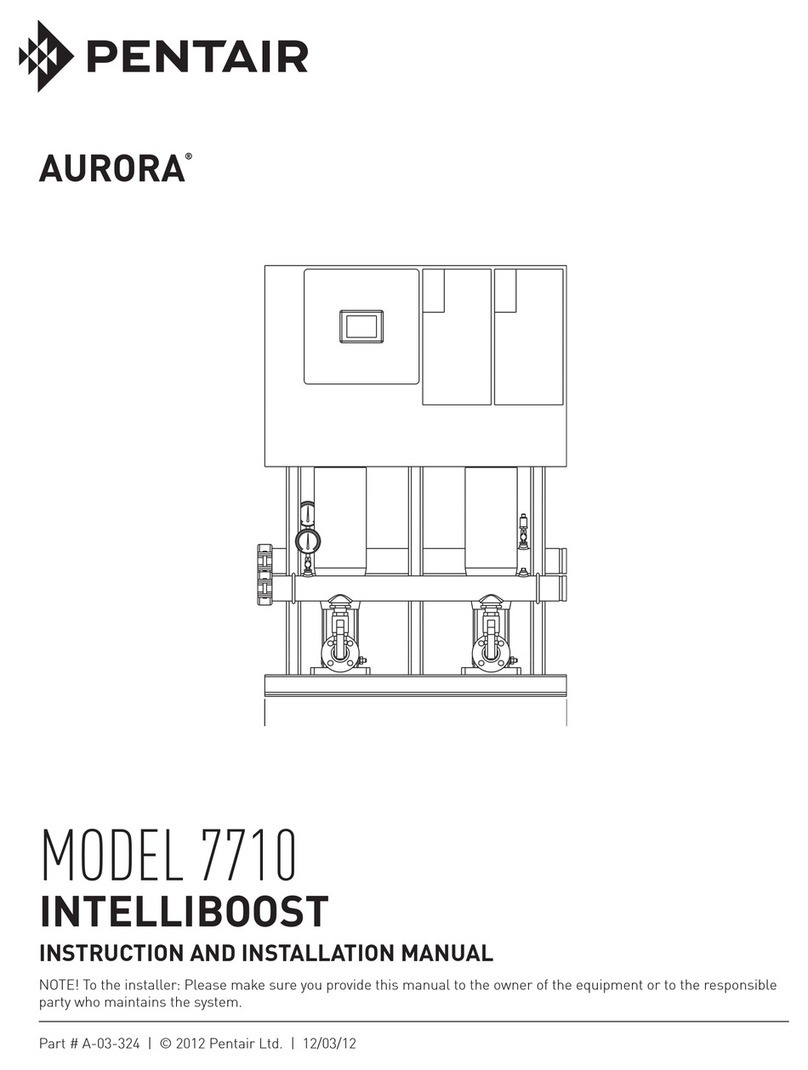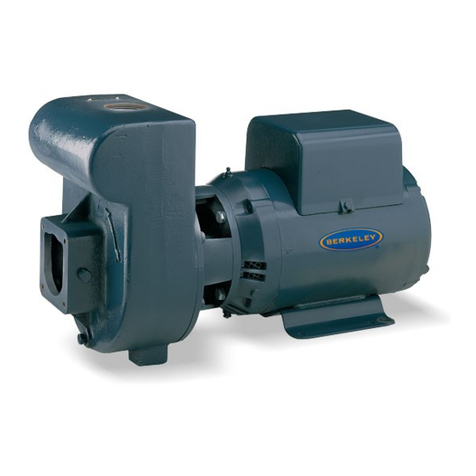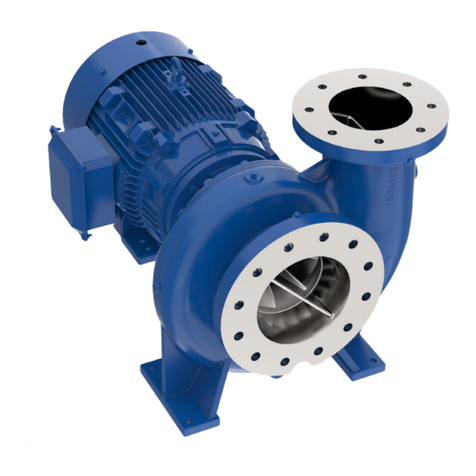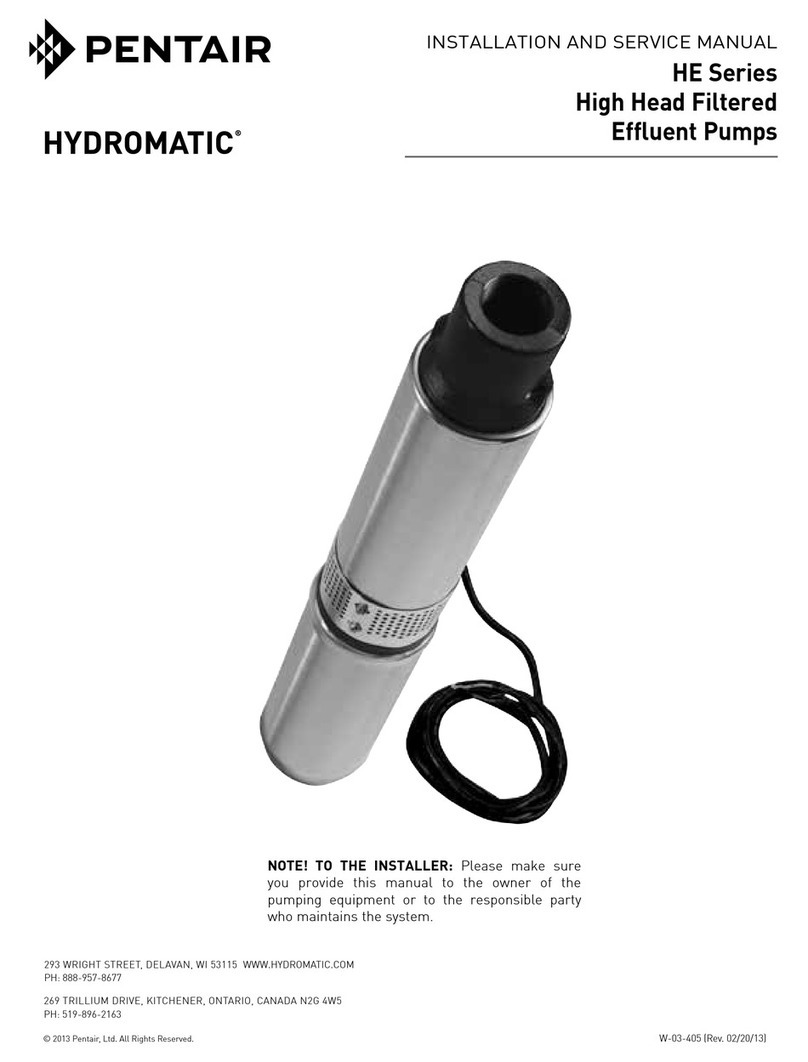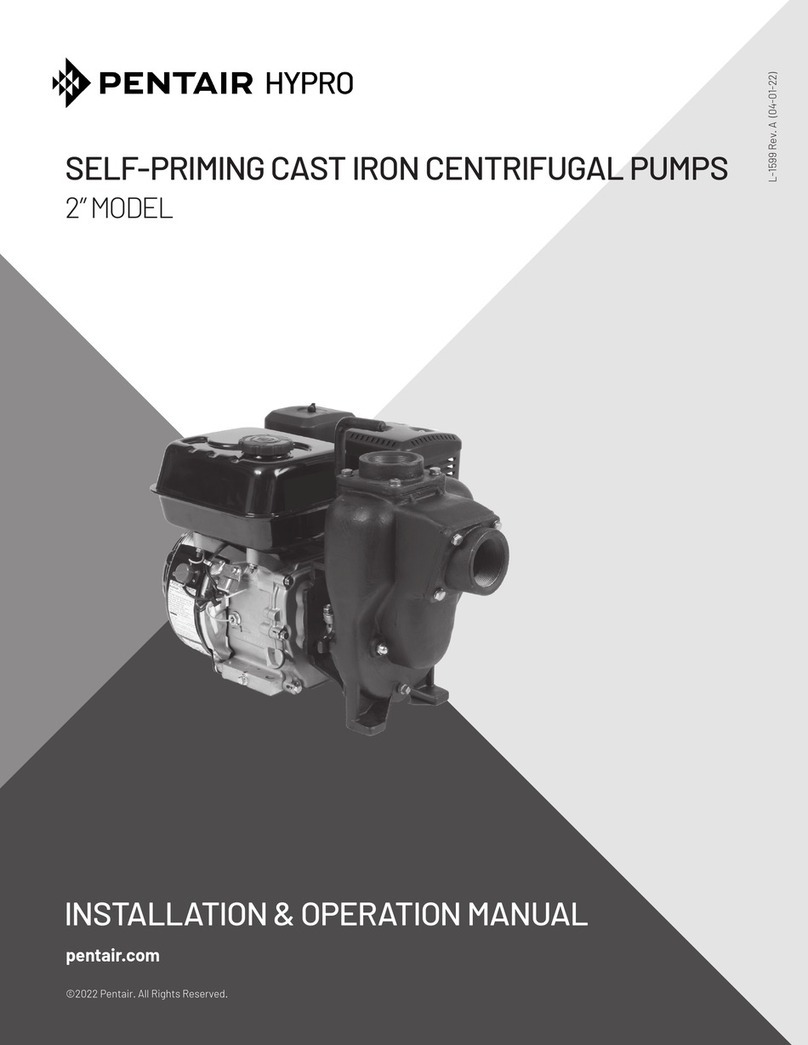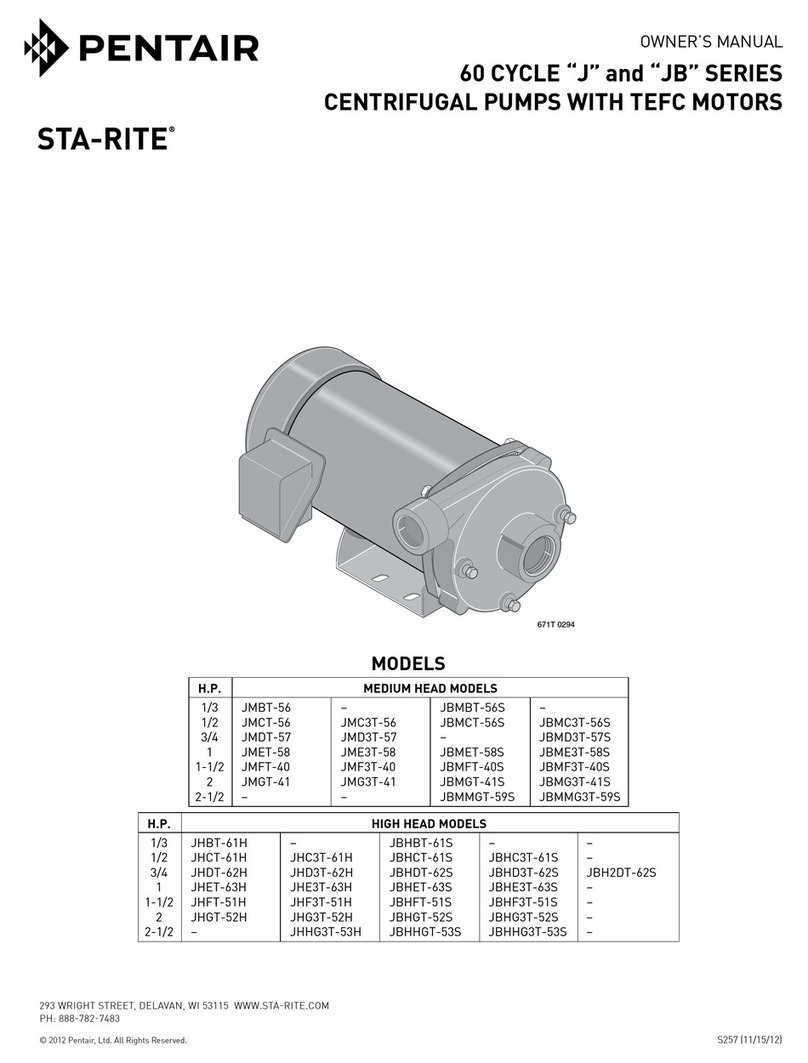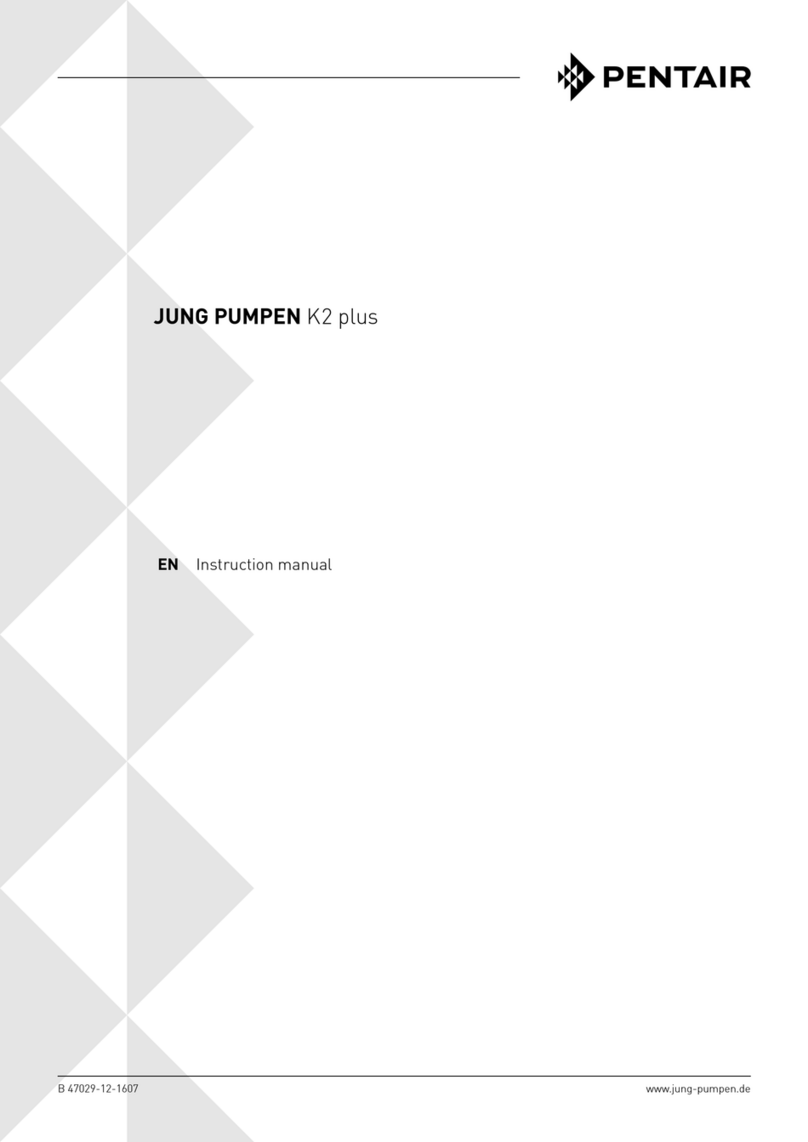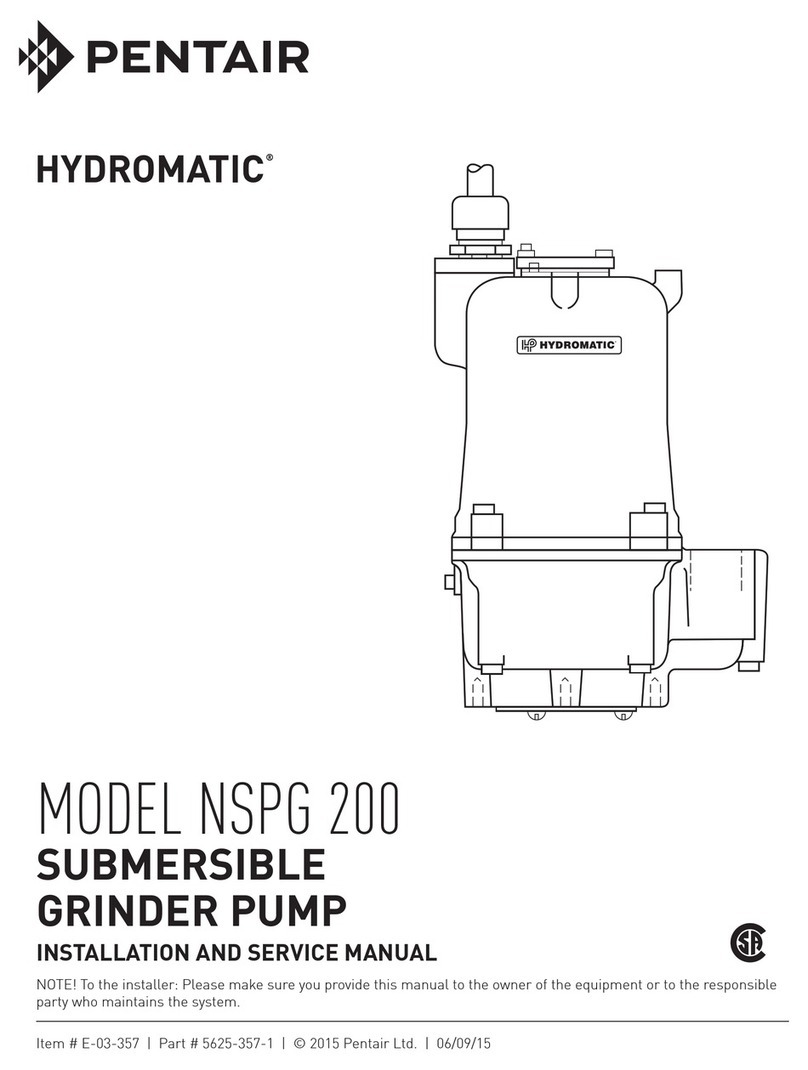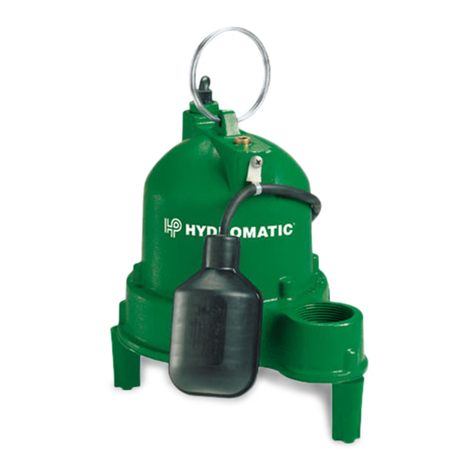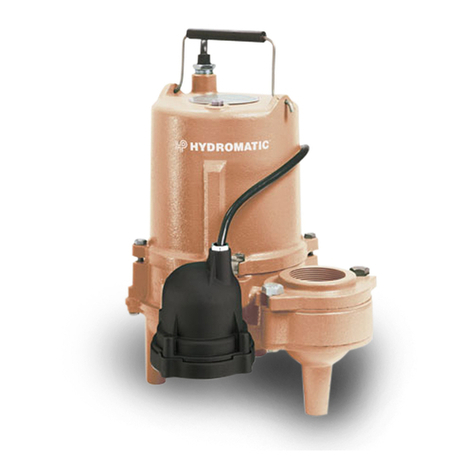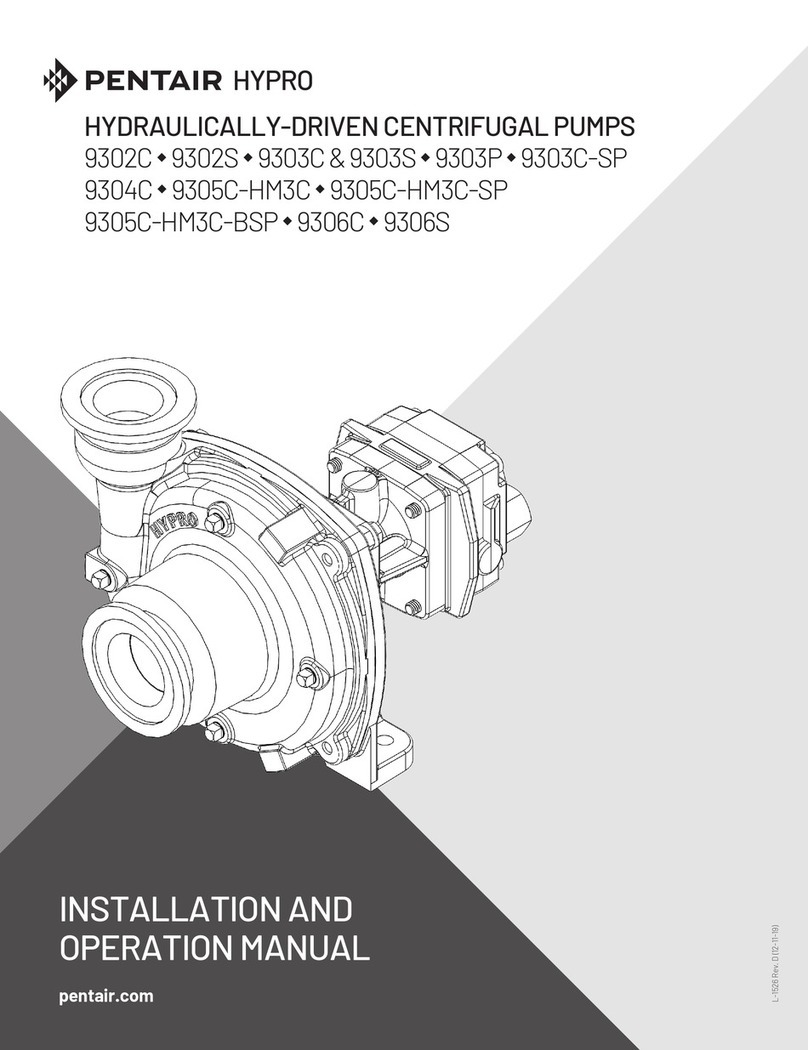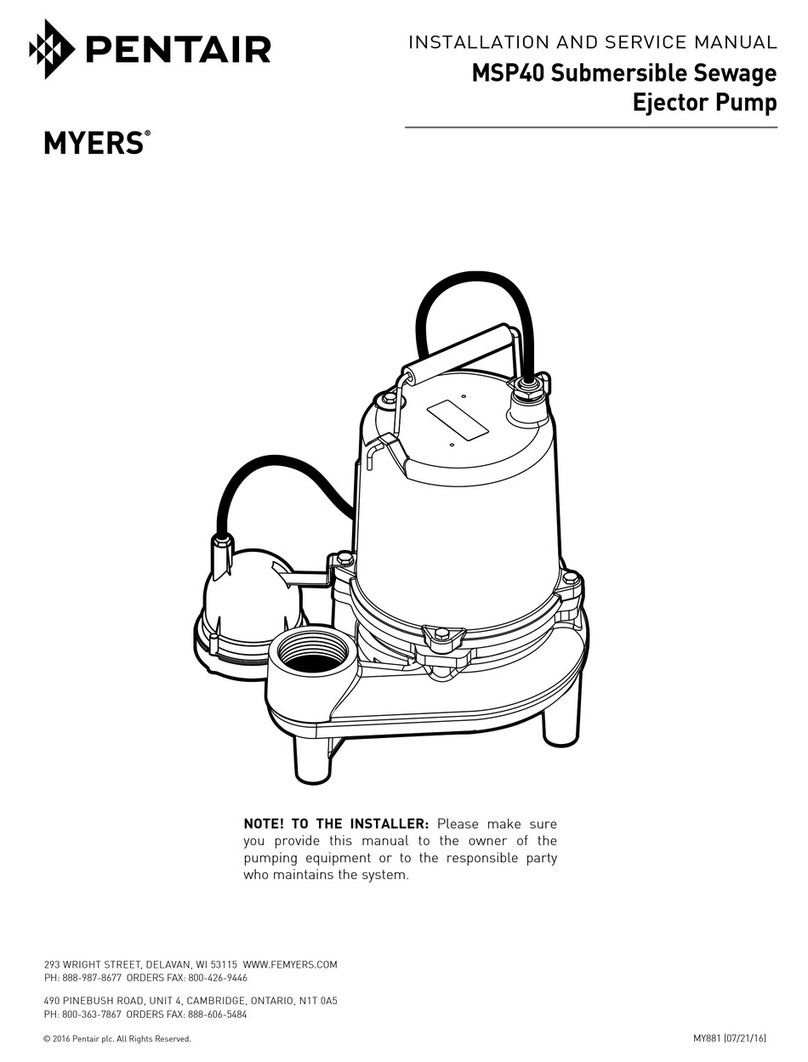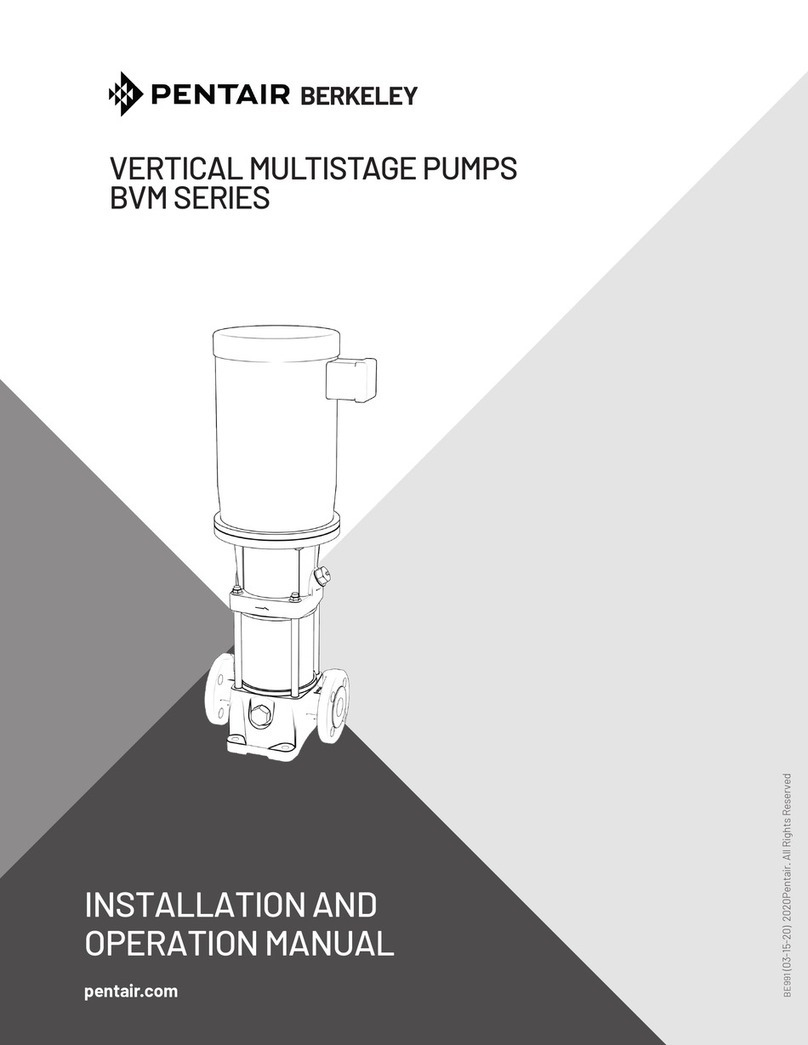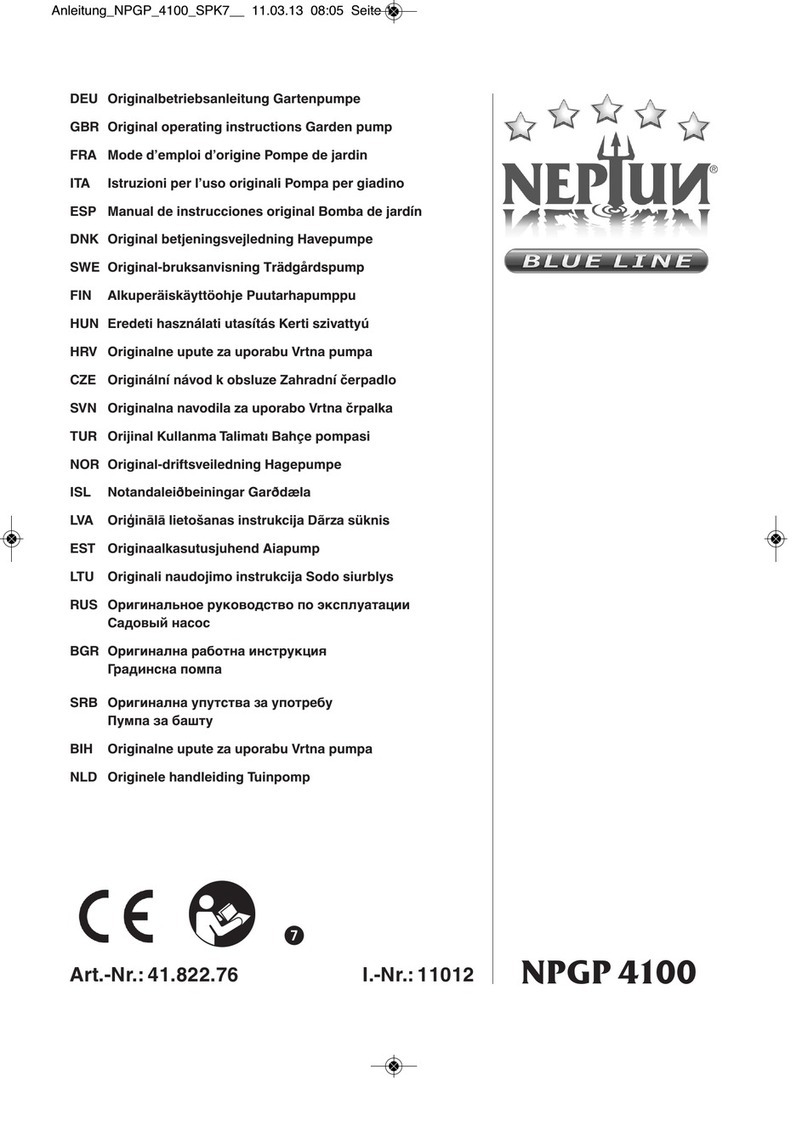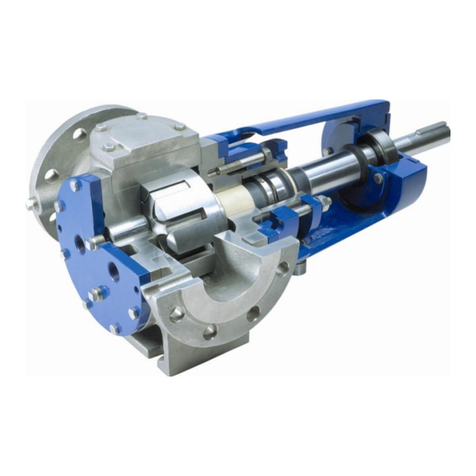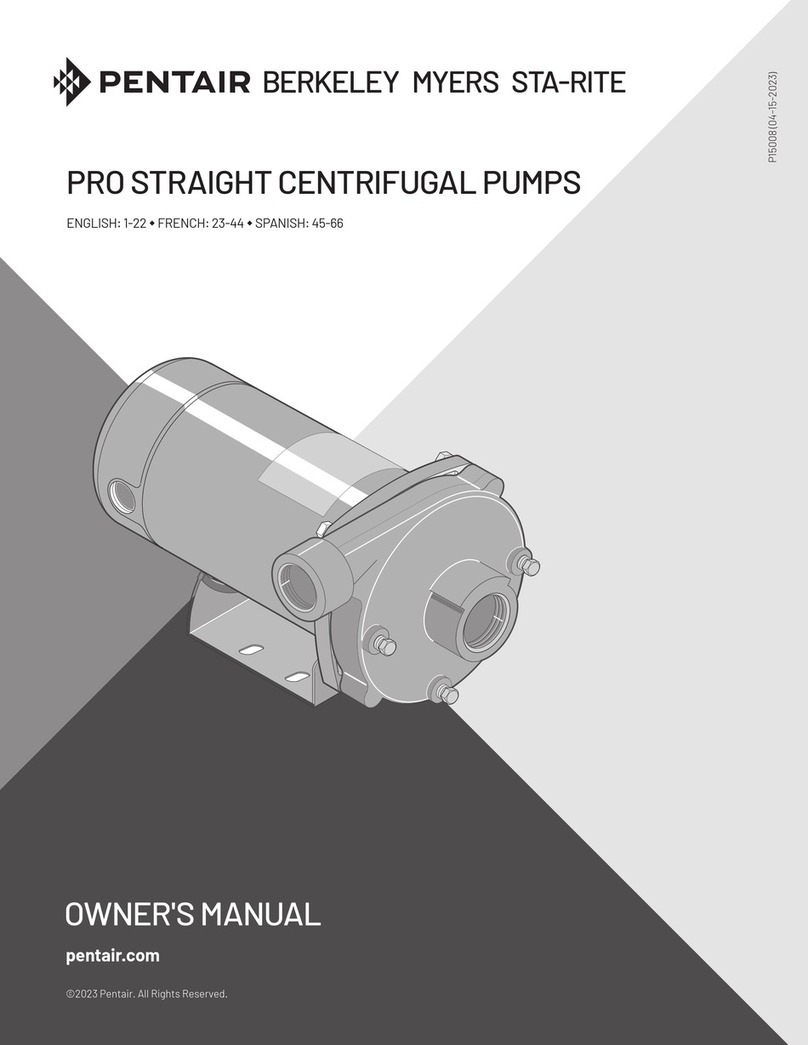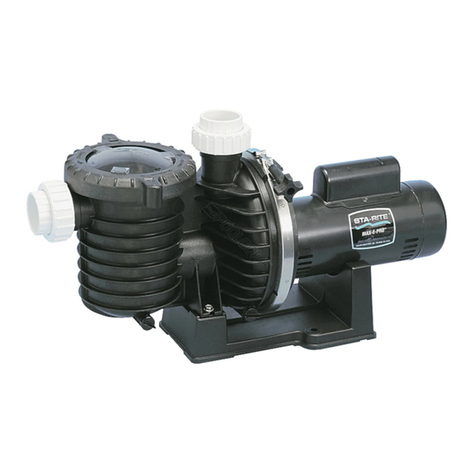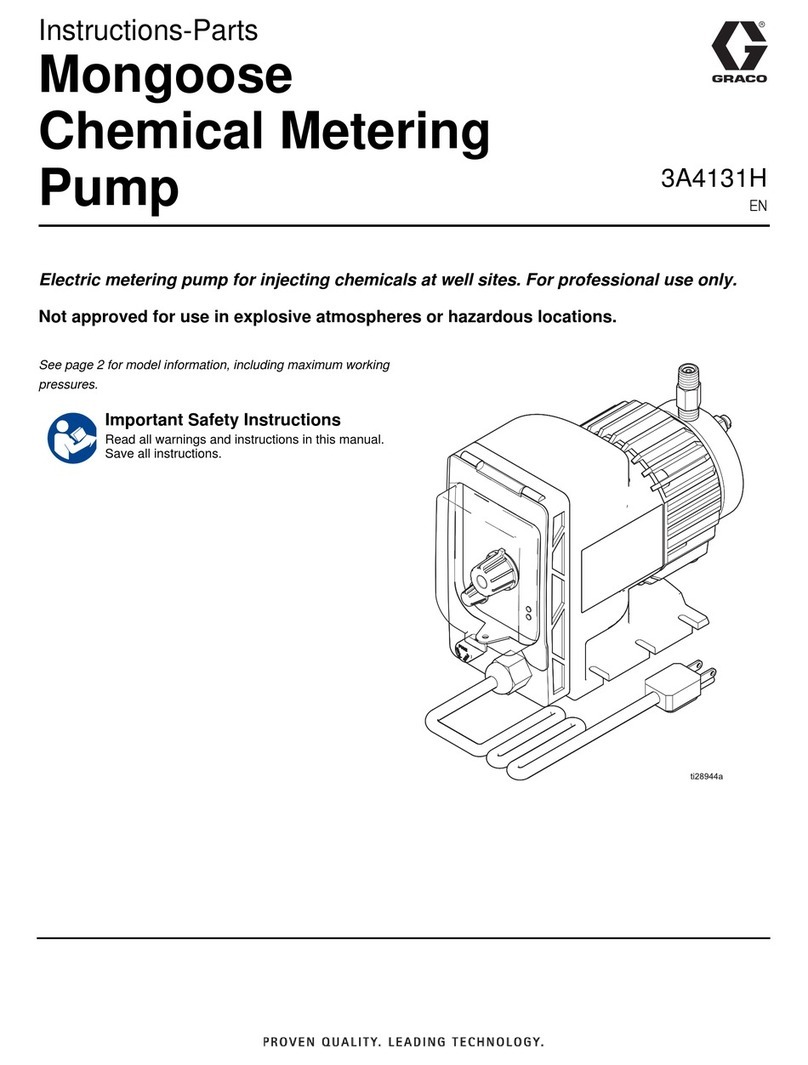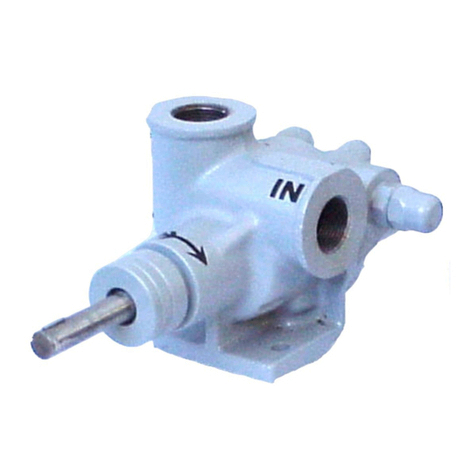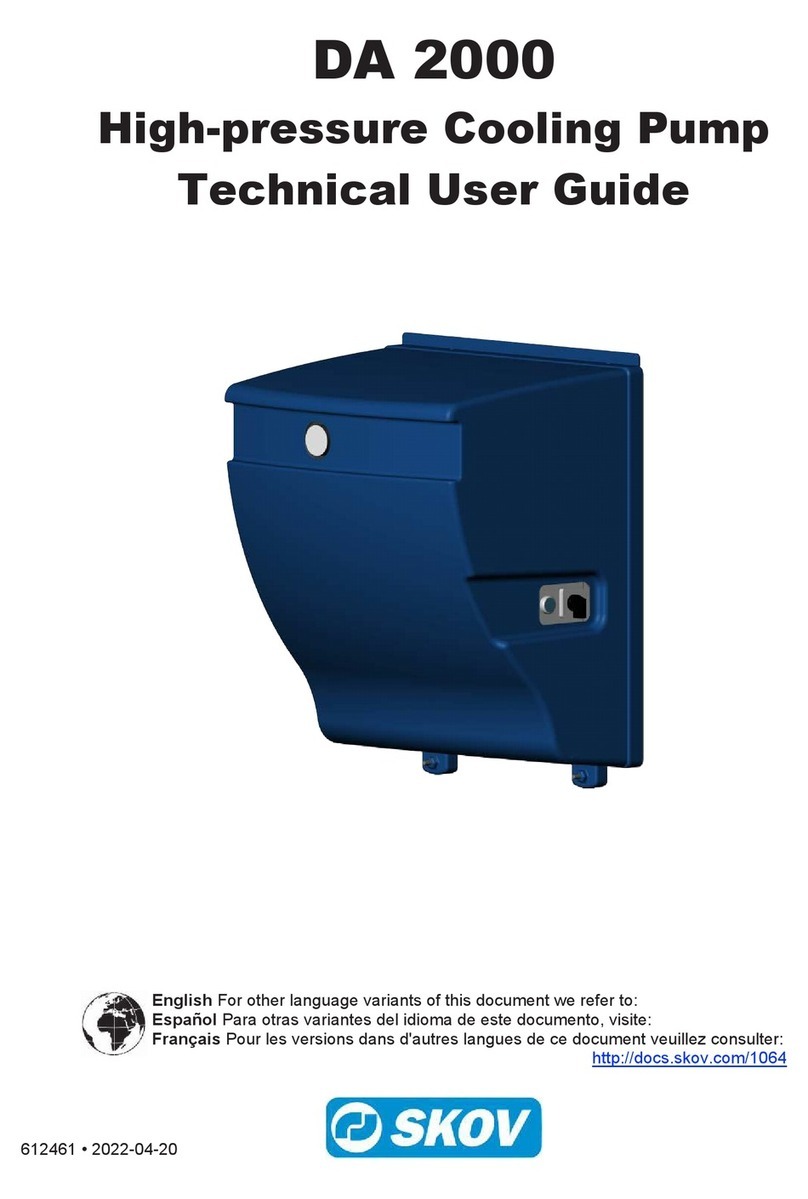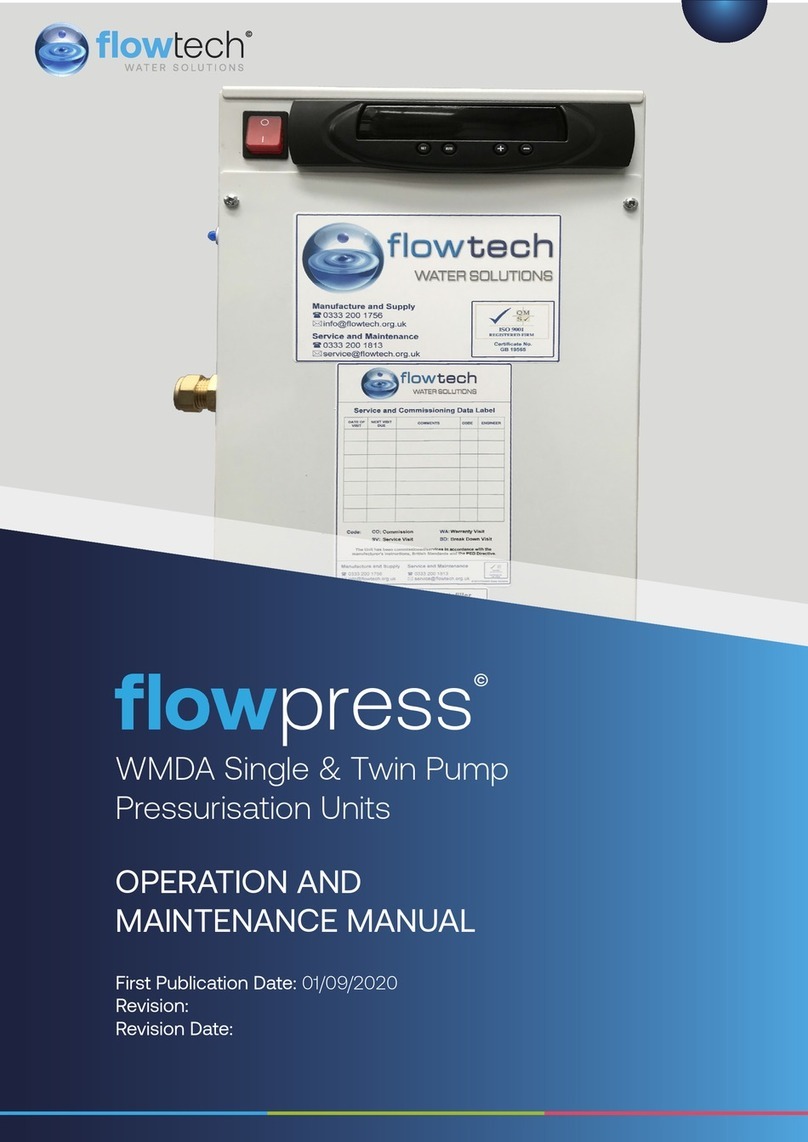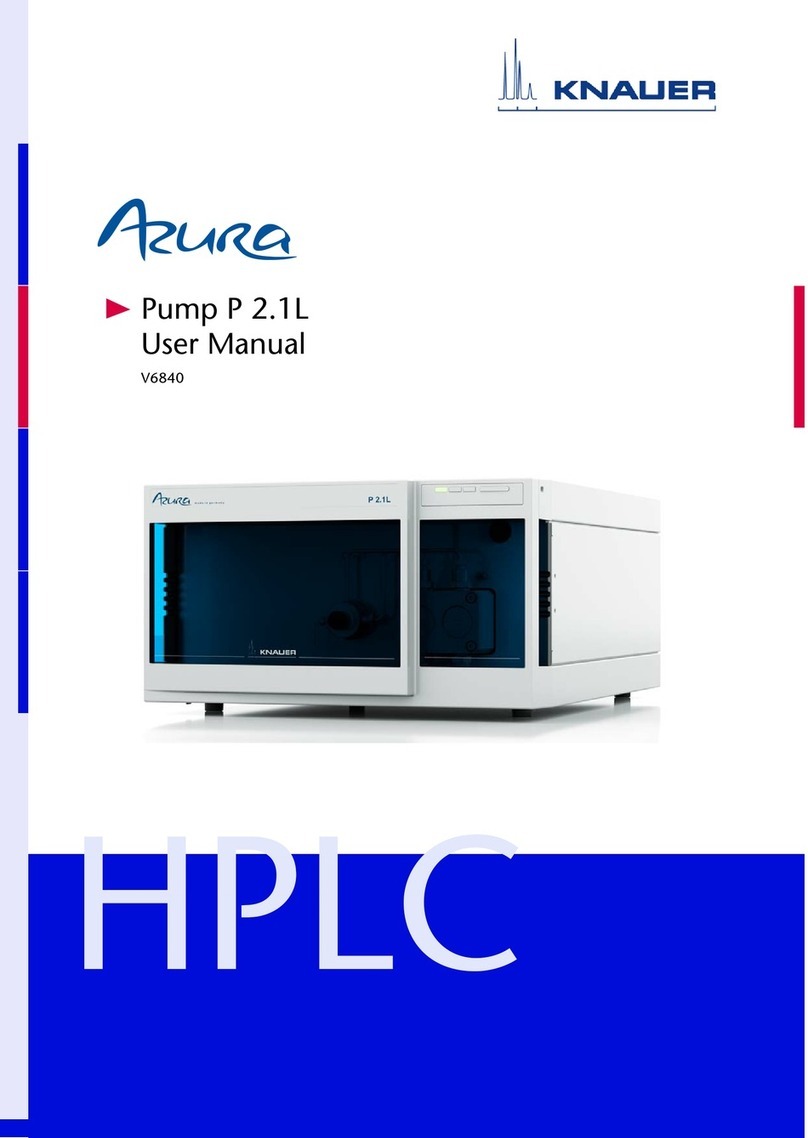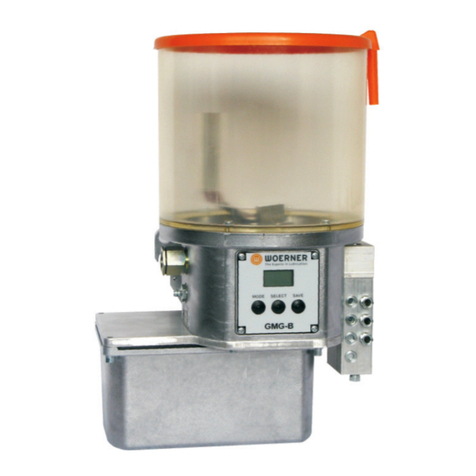
23833A245
3
DESIGN OF PRESSURE SEWER SYSTEMS
Myers has available complete computer software for
designing PRESSURE SEWER SYSTEMS. This
gives pipe sizes to use and gives exact flow from
any pump or group of pumps in the system when
operating simultaneously. This design DISK for IBM®
or COMPATIBLE computers is available to engineers
on request.
MOTORTYPE
The motors used in the ME40/ME40AG pumps are
pressed into the cast iron housing and surrounded by
dielectric oil for the greatest heat dissipation. The
ME40 uses a shaded pole, 4/10 HP, 1550 RPM motor.
The ME40AG uses a permanent split capacitor, 4/10
HP, 1625 RPM motor. Both units have Class A motor
insulation, are available in single phase 115 or 230 volt
with overload protection, and use a lower ball bearing -
upper sleeve bearing. These pumps have no starting
switches and do not require a control panel for simplex
installation.
SAFETYWARNINGS
WARNING: Risk of electric shock. Pumps are
supplied with a grounding conductor and grounding-
type attachment plug on the power cord. To reduce
the risk of electric shock, be certain that it is
connected only to a properly grounded, grounding-
type receptacle. DO NOT cut off ground pin or use an
adapter fitting. DO NOT use an extension cord with
this pump. Entire plug may be cut off it a control panel
is used.
When wiring this pump, follow all local electrical and
safety codes and ordinances as well as the most
recent National Electric Code (NEC-ANSI/NFPA 70).
All pumps have a GROUND WIRE that is connected to
the motor. This wire goes to the receptacle or control
panel which must be connected to a good outside
GROUND such as a metal water pipe or GROUND
STAKE DRIVEN AT LEAST 8 feet into the ground.
UL AND CSA APPROVAL
All pumps have UL and CSA approval. Myers is a
SSPMA certified pump member.
INSTALLATION
WARNING: Basin or tank must be vented in
accordance with local plumbing codes. These pumps
are not designed for and CANNOT be installed in
locations classified as hazardous in accordance with
the National Electric Code ANSI/NFPA 70.
CAUTION: Never enter pump chamber after
sewage or effluent has been in basin. Sewage
water can give off methane, hydrogen sulfide, and
other gasses which are highly poisonous. For this
reason, Myers recommends installing effluent pumps
with a quick removal system. The quick removal
system may be a union or Cam-lok® coupling if
the pipe or discharge hose is within reach from the
surface, or a rail system type quick disconnect on
deeper installations. See installation drawings for
suggested installation.
The dosing tank or pumping chamber must be
constructed of corrosion resistant materials and must
be capable of withstanding all anticipated internal and
external loads. It also must not allow infiltration or
exfiltration. The tank must have provisions for anti-
buoyancy. Access holes or covers must be adequate
size and be accessible from the surface to allow for
installation and maintenance of the system. Access
covers must be lockable or heavy enough to prevent
easy access by unauthorized personnel. The pumping
chamber holding capacity should be selected to allow
for emergency conditions.
The discharge pipe must be the same size as the pump
discharge, 1-1/2”or larger. In order to insure sufficient
fluid velocity to prevent any residual solids from
collecting in the discharge pipe, it is recommended that
a minimum flow of 2’per second be maintained. (12
GPM through 1-1/2”pipe, 21 GPM through 2”pipe and
46 GPM through 3” pipe). It is recommended that PVC
or equal pipe is used for corrosion resistance. A full flow
(ball or gate) shut-off valve must be installed to prevent
back flow of effluent if the pump must be removed for
service. A check valve must be installed on pressure
sewer systems and on other systems where conditions
allow to prevent back flow and to reduce wear on the
pump system.
A high water alarm must be installed on a separate
circuit from the pump circuit. The alarm should have
the ability to be tested for proper operation.
SCREEN
ME40AG pumps have a suction screen included in
the packaging. To secure the screen in place use two
screws (provided). Screen installation, maintenance,
and cleaning is the responsibility of the pump owner.
BEFORE DISMANTLING PUMP FOR
REPLACEMENT OF PARTS
Clean pump thoroughly. Knock off all scale and
deposits. Submerge complete unit in Clorox solution
for one hour before taking apart.












